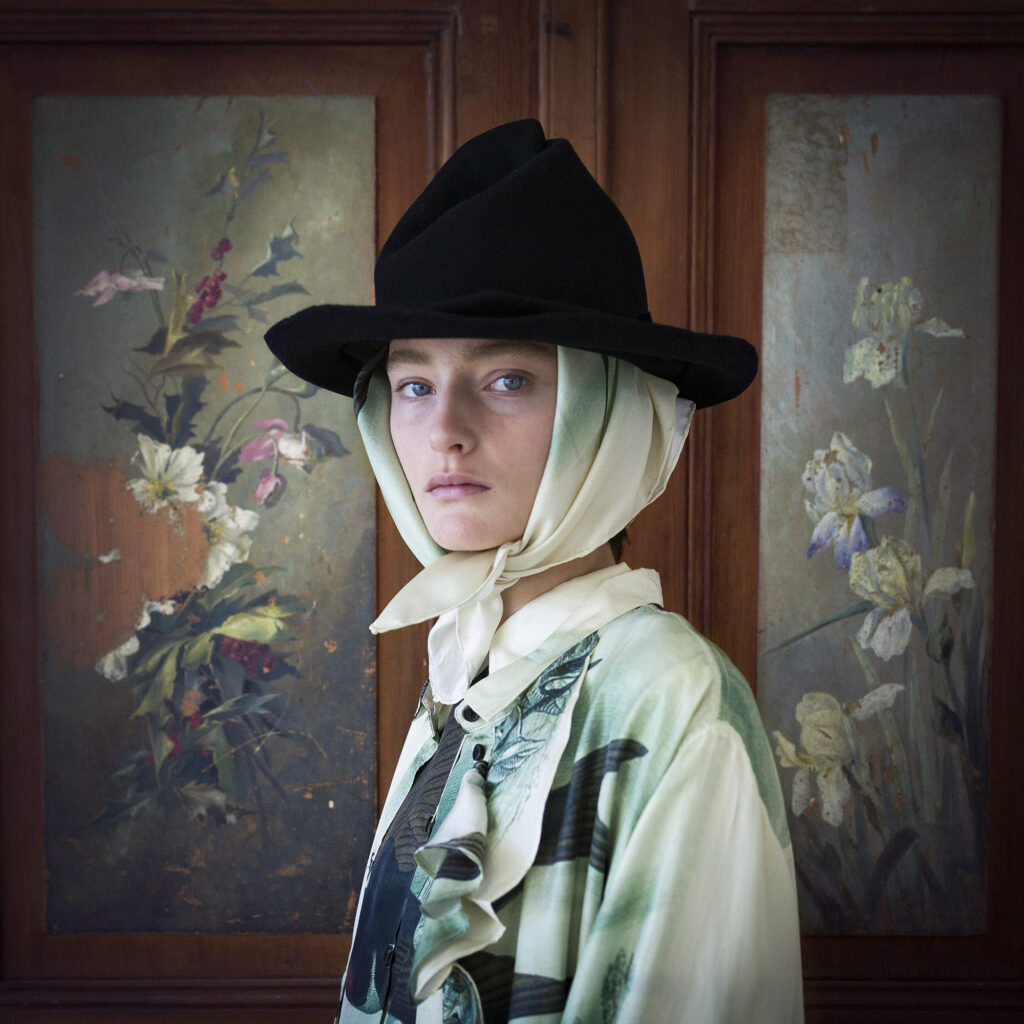
By Amanda Koehn
Last summer, the Jewish Federation of Cleveland’s Cleveland Israel Arts Connection started planning a Roe Green Gallery show of Israeli photographer Michal Chelbin’s works.

It started when curator and art dealer Matthew Garson, who is also the gallery’s volunteer director, visited Israel with the Cleveland Israel Arts Connection – the Federation’s program which brings Israeli artists and culture to Cleveland to help facilitate connections between the two communities. He became acquainted with Chelbin through a mutual contact, they hit it off and started planning her show at the Beachwood gallery.
Then on Oct. 7, 2023, Hamas launched a surprise attack on Israel, killing about 1,200 people. Another 250 were taken captive. The attack began the war in Gaza which has killed more than 36,000 Palestinians, most of them women and children, according to the Hamas-run Gaza Health Ministry as of early June.
To Garson, it wasn’t clear at the time if the show would still happen. He was hesitant to even contact Chelbin immediately after the attacks, he tells Jstyle.
“It was just an art show, it seemed so unimportant compared to what was going on,” he says.
But despite delays in printing the photographs, when they arrived, framers were ready to go and the show opened without pause in January 2024. An opening reception and curator talk was held Jan. 21, and the show is on view through August. Entitled “SEE ME,” it encompasses photos taken over 20-plus years of Chelbin’s photography career, capturing both her personal creative and editorial work.
In May, Chelbin visited Cleveland and her show. Jstyle interviewed her and Garson in the Roe Green Gallery, where she discussed her artistic mission, background and recent experience photographing families of the hostages for Time magazine’s Nov. 6, 2023 cover story.
“I search for visual contrast in my work – things that seemingly don’t match,” she tells Jstyle. “And the visual contrast creates an emotional contrast.”
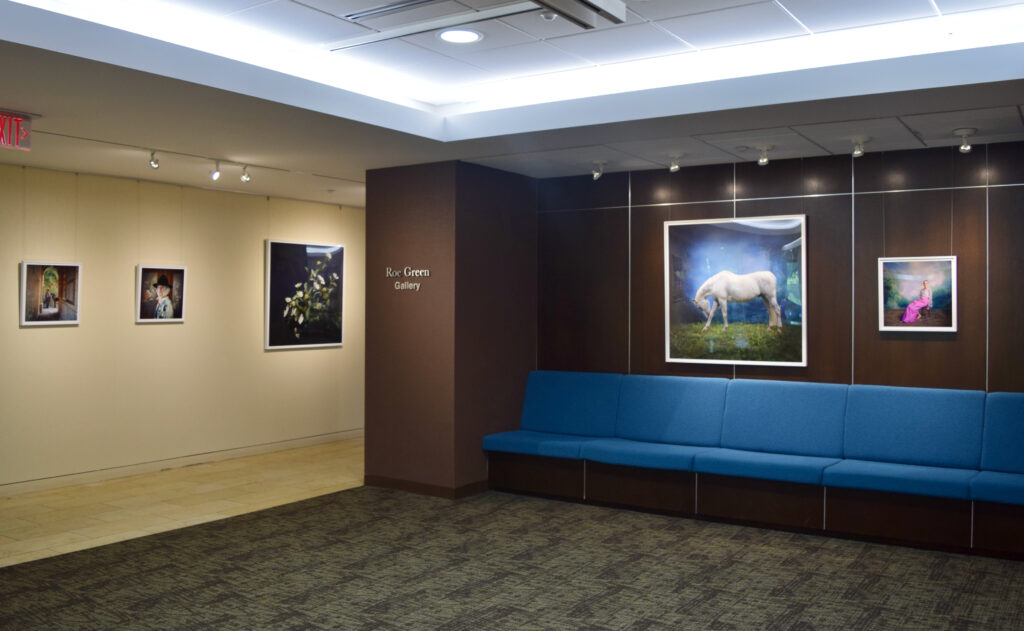
‘SEE ME’
The 28 photos in Chelbin’s “SEE ME” exhibit explore her artistic take on her subjects’ identities and roles. According to the exhibit’s description, “Chelbin’s photography attempts to capture human stories in everyday life; the identities of people not in the mainstream, many of them belonging to the edge of society and existing in the space between the odd and the ordinary. Her main themes are not social or topical, but collective and mythical; she searches for people who have a legendary quality in them.”
Her work spans locations around the world, often choosing to photograph uniformed and young people in staged scenarios.
“She’s traveled all over the world in taking photographs and I wanted to incorporate the full extent of her work – both commercial and her personal work,” says Garson, adding he’s followed Chelbin’s photography for years.
A native of Haifa, Chelbin graduated from the college WIZO Haifa Academy of Design and Education. She was also a military photographer in the Israel Defense Forces in which she practiced staging photos of soldiers. For one seven-year project, she photographed prisoners in Ukraine and Russia.
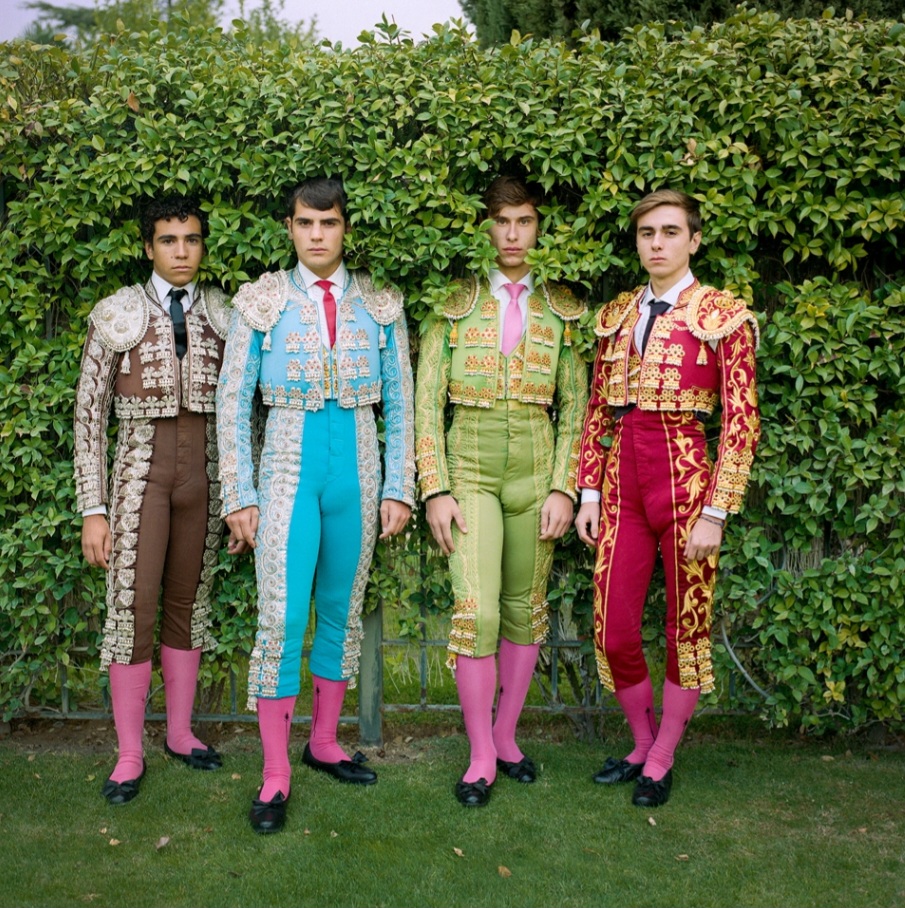
Chelbin uses film to photograph with natural light only and no digital color correcting, Garson says. Her work is featured in the Cleveland Museum of Art, The Metropolitan Museum of Art in New York, Los Angeles County Museum of Art, the Getty Center in LA, The Jewish Museum in New York, Tel Aviv Museum of Art, SFMOMA in San Francisco and beyond, according to her website. She’s also a contributor to magazines such as The New York Times Magazine, The New Yorker, GQ, The Guardian, The Sunday Times, the Financial Times, Le Monde and more.
One of Chelbin’s favorite photos in the “SEE ME” exhibit depicts four matadors in Spain. In “Young Matadors in the Bush” (2018), the matadors wear colorful uniforms, contrasted with their stoic facial expressions and being photographed in a bush. Another, “Nikita and Nastya” (2019) shows two children hanging from a rafter during a prom in Ukraine. She highlights seemingly contrasting features of a subject’s identity – like masculinity and fragility, or children dressed like adults, or costumes that don’t match their backdrop – to capture a viewer’s interest. For her commercial work, fashion replaces the uniforms, she says.
“The thing that interests me in my work is when fantasy meets reality,” she says. “… When I started taking pictures, I created my own world in studios, like building big scenes. And then I moved on to documenting circuses, and this is the place where reality meets fantasy every day. Afterward, it was something that guided me throughout my career.”
On a creative shoot, Chelbin will often spend the first day with her camera in her bag, getting a sense of the place and people there. Then, she’ll identify people to photograph who have a “legendary quality,” Garson says.
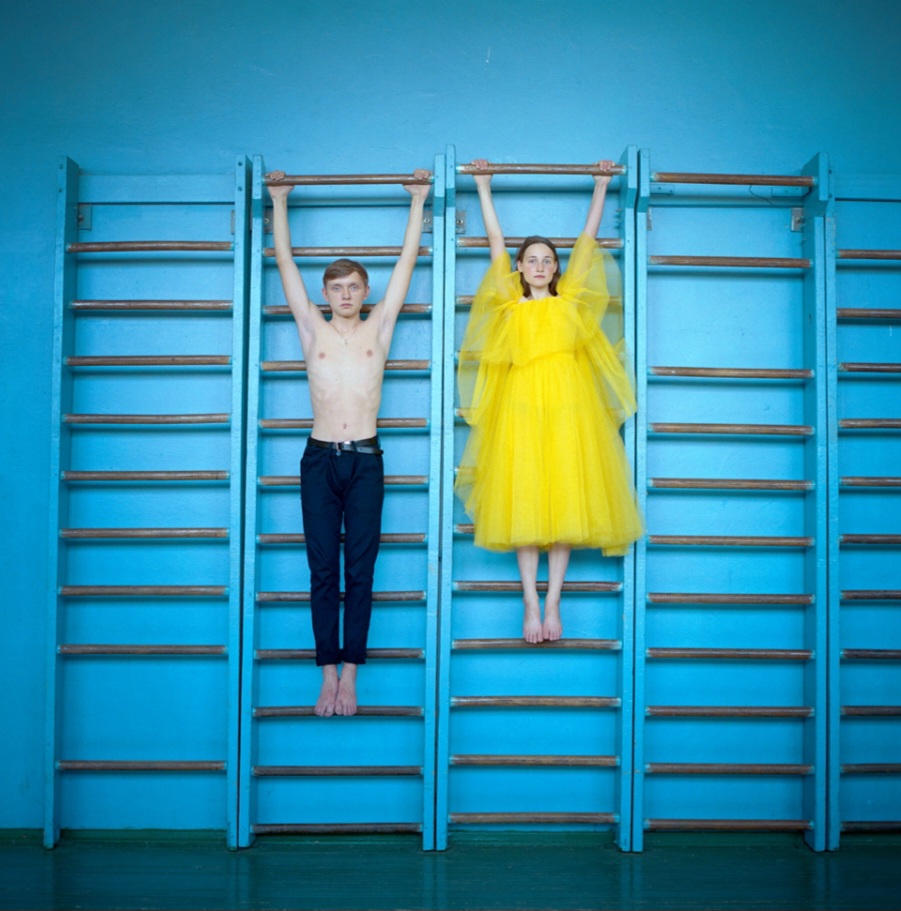
“You don’t see the matadors (photographed) inside a ring because that’s what you would expect,” he says. “Instead, you put them on a hill or in a bush with this simple expression, and the viewer then looks at it and says, ‘Why?’ And that questioning … that’s sort of how I came up with the (exhibit’s) name. She forces the viewer to look and ‘SEE ME” and figure out who is this person and what is their identity.”
PHOTOGRAPHING FAMILIES OF HOSTAGES
Immediately after the Oct. 7 attacks, Chelbin says she wanted to raise awareness about what happened. Having been a regular contributor to international magazines – she lived in New York for several years which helped build her editorial connections – she pitched Time magazine. Time was doing a story on the hostage situation, and Chelbin was assigned to travel across Israel and photograph 13 families of the hostages – all in four days, in the chaotic first week after the attacks.
Different than her creative work and past editorial assignments, she had a short amount of time to photograph each family – she spent about 30 minutes in each home, she says, not wanting to be too intrusive. Family members were photographed with pictures of their missing loved one, showing raw emotion that didn’t need significant staging. She called the situation “tough and confusing.”
“I didn’t want to force myself on those families,” she says. “… During that week, they weren’t approached by any government representatives, hardly the army, they were very confused. Sometimes it would be us as the first ones to come to (them). … Sometimes they just wanted to talk and share the story, and sometimes needed a hug.”
Her powerful photos were featured in the Nov. 6 issue of Time – including on the cover – with the story, “The Hostage Nightmare.” The magazine also named her photos to its Best Photos of 2023 list.
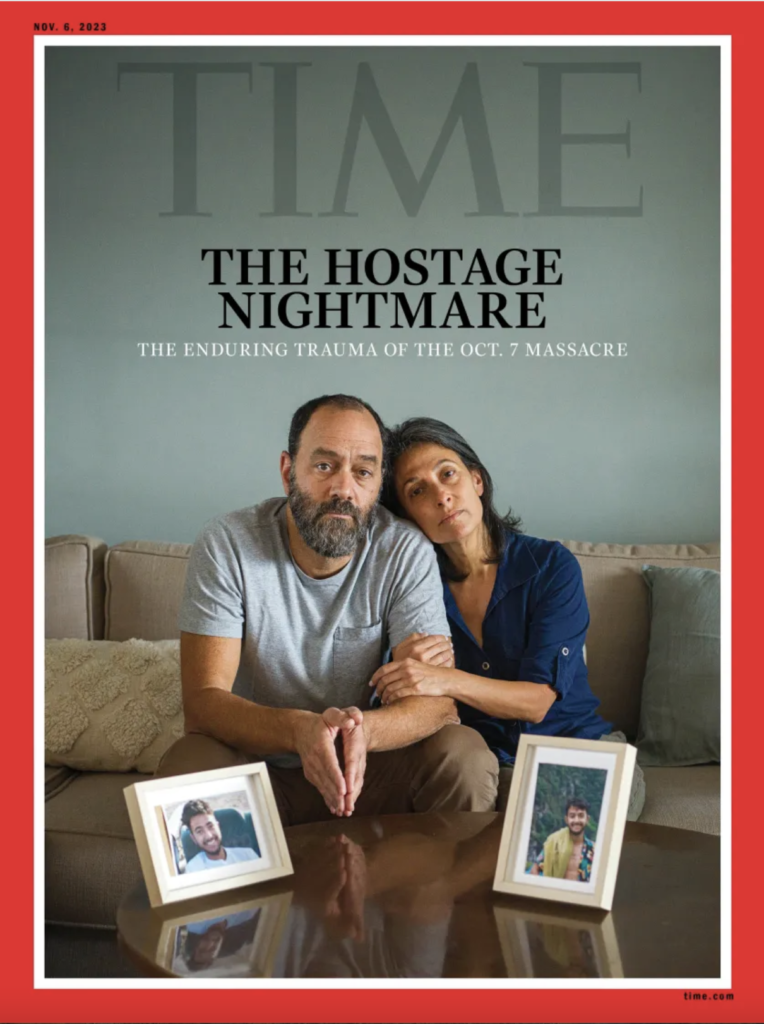
While Chelbin says she wishes she never had a reason to take these photos, it was important to share the hostages’ stories on such a large platform across the world.
“What you see is the reality of the way these people feel,” Garson says of the families’ photos, noting that at the time, many of the families didn’t know if their loved ones were alive or dead. “… That first week was chaos – they didn’t know what was going on. Everyone was in shock.”
Showing Chelbin’s work at this crucial time reiterated the intended mission of the Cleveland Israel Arts Connection, Garson says.
“Our goal is to bring Israel art of all disciplines to Cleveland and expose the Cleveland community, and we try and pick important and relevant artists of our times,” he says, adding that to select a photographer who captured such important, timely and devastating subject matter for a major magazine helps demonstrate the gallery’s emphasis on top-tier, current work.
This was the artist’s first visit to Cleveland and her engagements over several days in early May included a talk at the Maltz Museum in Beachwood and a brunch at the Cleveland Museum of Art.
Chelbin says since the war began, she’s lost connections to projects in Europe, linked to her being Israeli. She notes her country’s current isolation due to the war, in which universities have canceled student exchanges, and Israeli theater and dance groups have had performances abroad canceled or postponed due to security and challenges of perception – despite these individual institutions not being affiliated with Israeli government. Thus, she’s currently working on projects in Israel, including photographing the Batsheva Dance Company, a leading dance troupe there. For the first time, she’s photographing moving scenes, Garson says.
On View
“SEE ME” by Michal Chelbin is on view through August in the Roe Green Gallery at the Jewish Federation of Cleveland, 25701 Science Park Drive, Beachwood. To schedule viewing appointments or group tours, contact israelarts@jewishcleveland.org or 216-593-2890.
